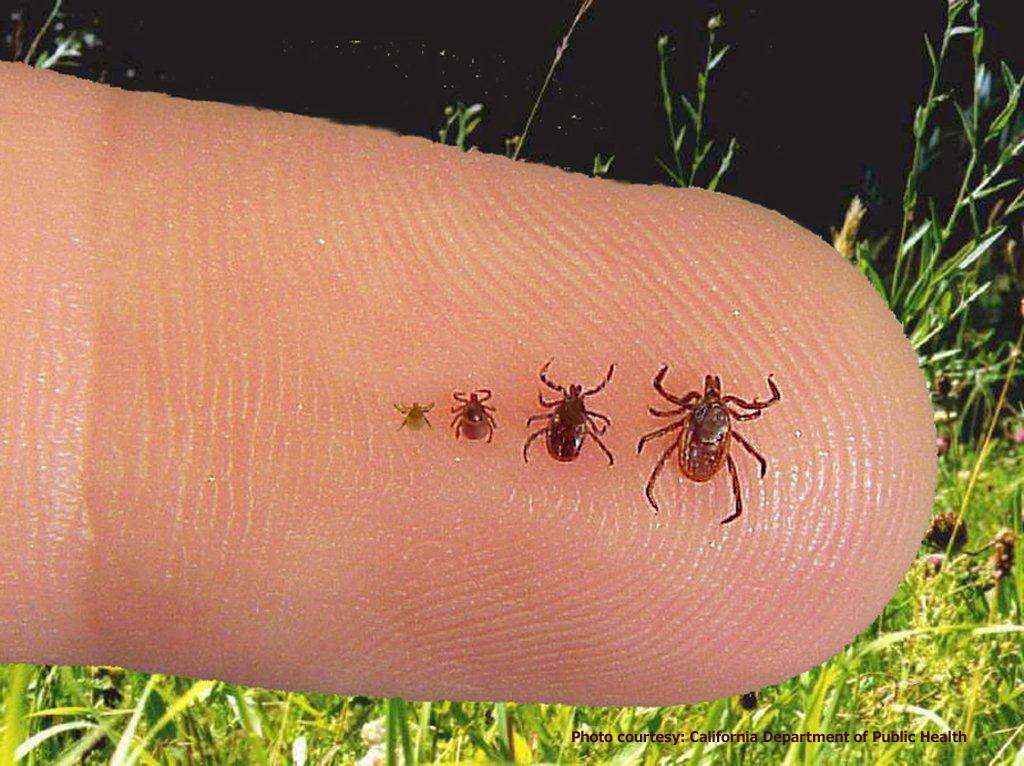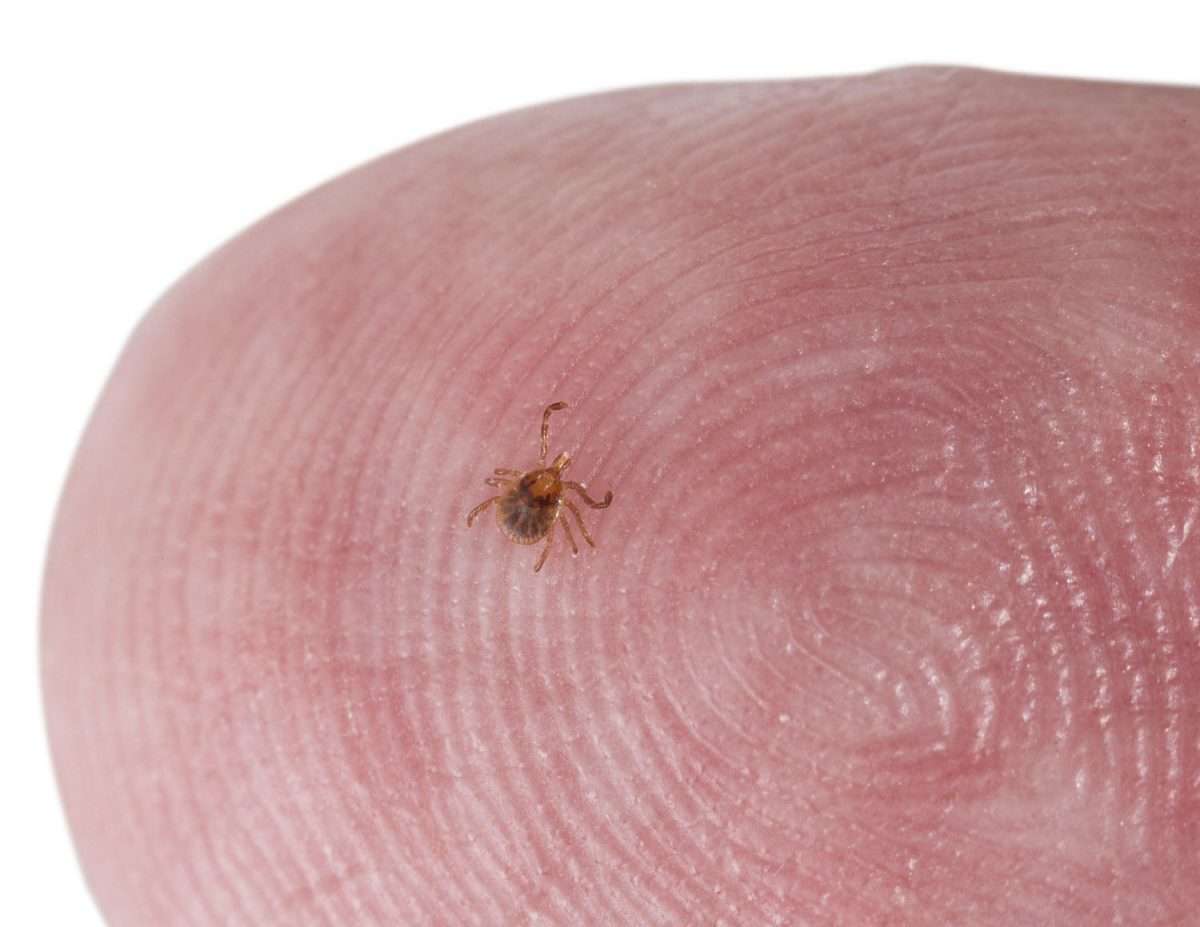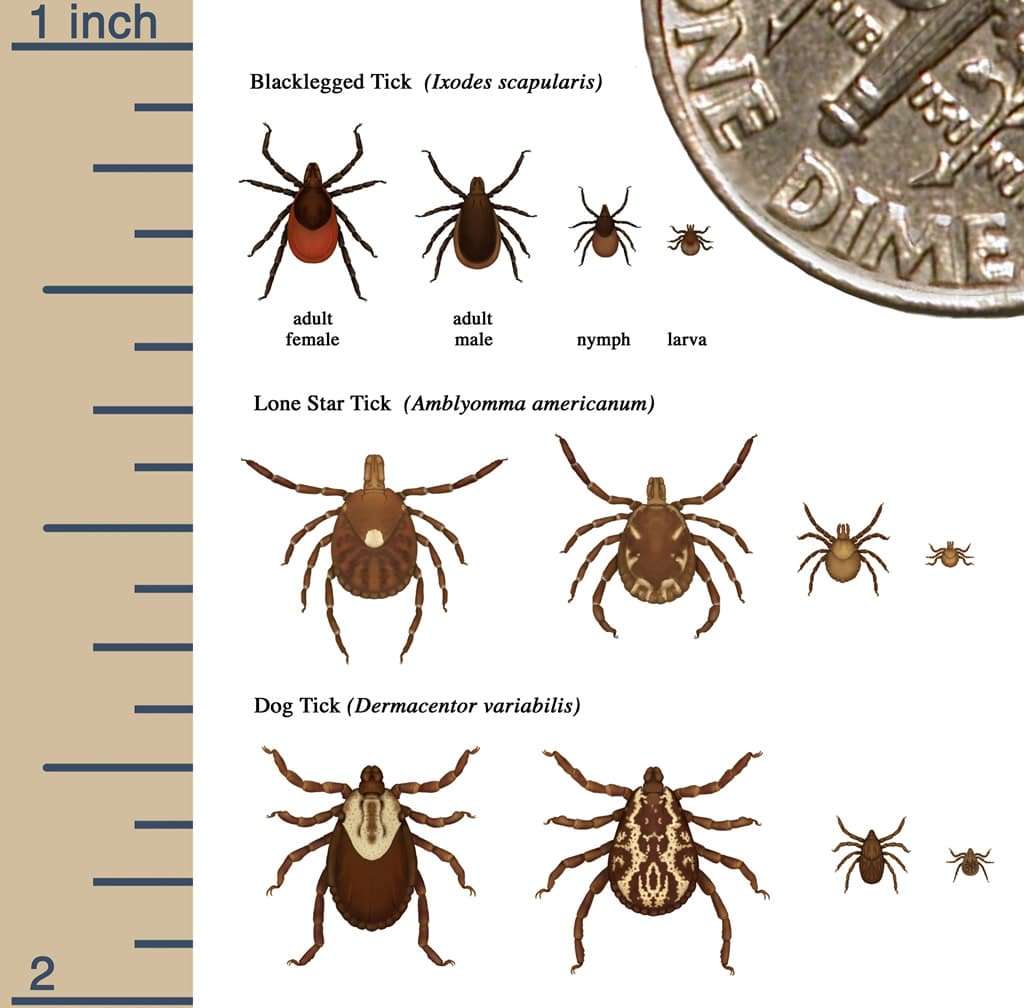What Can A Workplace Or Home Do To Reduce The Presence Of Ticks
Keep the lawn and yard well maintained to prevent ticks from living near the home or workplace.
- Keep the grass mowed. Trim trees and shrubs.
- Remove leaf litter, brush, and weeds at the edge of the lawn, and around stonewalls and woodpiles.
- Clean up and seal stonewalls and small openings around the home to help discourage rodents.
- Keep stacked firewood piles and bird feeders away from buildings.
- Keep any pets, particularly dogs, out of the woods and talk to your veterinarian about tick repellents for your pets.
- Move children’s swing sets and sandboxes away from the woodland’s edge and use a woodchip or mulch foundation.
- Consider using hard landscape items such as woodchips, mulch, stones, gravel, tile, or metals.
- Create a border or barrier between the lawn, woods, or stonewalls to discourage deer and rodent activity.
- Widen woodland trails.
What Other Dangerous Ticks Are Out There
Although deer ticks the most common and notorious type of tick in the U.S., there are many other disease-carrying ticks like the Lone Star, American dog, and Asian longhorn ticks. These ticks can carry anything from Ehrlichia chaffeensis to Ehrlichia ewingii , to tularemia, to STARI, which manifests with a rash, fatigue, headache, fever, and muscle pains.
What To Do If You Find A Tick
If you see a tick, try to remove it from your childs body. If the tick was on the body for less than 36 hours, it may help prevent infection.
To safely remove a tick:
- Use fine-tipped tweezers to grasp the tick at its head or mouth, close to the skin.
- Pull firmly on the tick until it releases the skin. Try to ease out any parts that get stuck in the skin.
- Wash the bite area with rubbing alcohol or soap and water and apply an antiseptic lotion or cream.
You May Like: How To Treat Late Stage Lyme Disease
Ticks That Carry Lyme Disease Bacteria
The Ixodes tick, also known as the blacklegged tick or deer tick, is the species that commonly carries and transmits the Lyme disease bacterium. In the eastern and midwestern states of the U.S. during the spring, summer, and fall, the main type of tick that carries the bacterium is Ixodes scapularis or deer tick. In the western U.S., Ixodes pacificusâthe western blacklegged tickâprimarily carries Lyme disease bacteria. Your chances of Lyme disease after a tick bite partially depends on the type of tick that bit you and what life cycle stage it’s in.
What Percentage Of Ticks Carry Lyme Disease

A stroll through the tall grass or a hike in the woods can inadvertently attract some unwanted stowaways ticks! These pesky parasitic insects latch onto a host and feed on blood for sustenance. As known carriers of Lyme disease, ticks can pose significant health hazards to their nonconsenting hosts.
But do all ticks carry Lyme disease? And if not, what percentage of ticks carry Lyme disease? Let the insect experts at Mosquito Joe answer all you want to know about ticks and Lyme disease.
Also Check: Do Infectious Disease Doctors Treat Lyme
Where Blacklegged Ticks Live
We continue to track where infected and uninfected blacklegged ticks are being found.
Public Health Ontarios Lyme disease page has a map that shows areas in Ontario where they estimate you are more likely to find blacklegged ticks.
Blacklegged ticks are spreading to new areas of the province because of climate change. They can also spread by traveling on birds and deer. While the probability is low, it is possible to find an infected tick almost anywhere in Ontario.
Ticks are most active in spring and summer, but can be found at any time of the year when the temperature is above freezing.
Later Signs And Symptoms
- Severe headaches and neck stiffness
- Additional EM rashes on other areas of the body
- Facial palsy
- Arthritis with severe joint pain and swelling, particularly the knees and other large joints.
- Intermittent pain in tendons, muscles, joints, and bones
- Heart palpitations or an irregular heart beat
- Episodes of dizziness or shortness of breath
- Inflammation of the brain and spinal cord
- Nerve pain
Recommended Reading: How Many People Die From Lyme Disease
Where Do We Find Blacklegged Ticks
- Blacklegged ticks live in wooded, brushy areas that provide food and cover for white-footed mice, deer and other mammals.
- This habitat also provides the humidity ticks need to survive.
The Evidence Base For Existing Interventions To Reduce Human Tick
Perhaps the most vexing aspect of control of I. scapularis-borne diseases, as exemplified by Lyme disease, is that we already know the geographic areas in which the majority of cases will occur each year, and the months of the year during which most of the infections will be acquired . In the Lyme disease focus in the northeast, we also know that humans most often encounter I. scapularis ticks in peridomestic settings, including on their own residential properties . Despite this detailed knowledge of when and where humans are most at risk for exposure to infected ticks, we remain unable to control I. scapularis-borne diseases.
Desired Characteristics of an Ideal Tick-Borne Disease Prevention Method.
Also Check: Do Dog Ticks Carry Lyme Disease
What Do I Do If I Find A Tick On Me
There are quite a few myths that circulate about tick removal, including that you should remove a tick with a heat source, petroleum jelly, nail polish, or a chemical. Do you know whats true? Do you know what the best method is for tick-removal? We disclose the details in True or False: Bug Myths Revealed.
Ticks And Lyme Disease What You Need To Know
- May 15th, 2020
Tick bites are common and with the increasing prevalence of Lyme disease in our area, tick bites cause a lot of worry for parents and children. If you or your child gets a tick bite dont panic, it is important to make note of the size, color, and shape of the tick and to remove the tick promptly.
Our patients and their parents have been asking a lot of excellent questions about tick bites and Lyme disease. Please find the answers to these frequently asked questions below and call us with any questions or concerns.
Recommended Reading: Can You Get Lyme Disease From Eating Deer Meat
My Friend Had A Tick Bite And Her Doctor Prescribed A Dose Of Antibiotics To Prevent Lyme Disease When Are Prophylactic Antibiotics Recommended
Limited data is available on the benefit of using prophylactic antibiotics in children following a tick bite. The only antibiotic used for this prophylaxis is doxycycline.
Its use is only recommended if the following five criteria are met:
Ask your provider for more information if you think you or your child may need a prophylactic dose of doxycycline following a tick bite.
It is important to get outside and play, hike, and explore. The possibility of tick bites should not prevent you and your children from enjoying the outdoors. Being diligent about tick prevention and tick checks will go a long way in avoiding tick-borne illnesses.
Remember that even if a tick bite occurs, the risk of Lyme disease remains low. Please do not hesitate to call Mt. Ascutney Hospital and Health Center at 674-7337 or the Ottauquechee Health Center at 457-3030 if you have any questions or concerns. We are here to help.
Can Black Legged Ticks Transmit Lyme Disease

Lyme Disease is an infectious bacteria spread by insects and small animals, most notably ticks, but which tick species should you be most concerned with? Its best to avoid any ticks at all if possible. Black Legged ticks do indeed carry Lyme Disease, as well as the diseases babesiosis and anaplasmosis. The Western Blaklegged is a species commonly known for spreading Lyme Disease in North America. It usually takes 36 to 48 hours for the disease to actually spread to a human being, but to be on the safe side, if you spot a tick on your arms or legs, remove it with tweezers.
If you spot any red marks or spots that resemble bites or scratches, consult a healthcare professional. Black legged ticks will also spread Lyme Disease to your pets, so routinely check your animals for bugs, bathe them on a regular basis and avoid walking them in wooded areas or places with long grass. During Tick Season, always keep your pets on a short leash, and avoid letting them loose to explore in wooded areas or riverbanks.
GET A FREE QUOTE
Don’t Miss: Old Lyme Ct Hotels Beach
What Are The 3 Types Of Ticks That Can Carry Lyme Disease
The Ixodes tick, commonly known as the blacklegged tick, is a tick that carries Lyme disease. In the eastern and midwestern United States, the main species is Ixodes scapularis and the related western United States version is Ixodes pacificus . ).
Are all tick bites Lyme disease?
Only a minority of tick bites lead to Lyme disease. The longer the tick remains attached to your skin, the greater your risk of contracting the disease. Lyme infection is unlikely if the tick is attached for less than 36-48 hours.
Where These Ticks Are Found
Lyme disease ticks can be found in leaf litter, woodpiles, stone walls, tall grass, beach grass, bushy areas, areas planted with ground covers, and lawn edges that meet forests, woodlots, and gardens. Essentially, Lyme disease ticks can be found anywhere their hosts live, though they tend to prefer moist and shady areas. The deer tick is infected by vertebrate animals like white-footed mice, chipmunks, shrews, ground-feeding birds, and other small mammals that have Lyme disease bacteria themselves.
Also Check: Hey Google What Are The Symptoms Of Lyme Disease
Do All Ticks Carry Lyme Disease
The warm weather is here! Time for fresh air fun with hiking, camping and trips to the beach. But warmer weather also brings some things that are not so welcome: ticks and the germs they spread.
If you find a tick attached to you or to your child, what do you do? Do you need to worry about Lyme disease? Not always, says Aryeh Baer, M.D., a pediatric infectious diseases specialist at Joseph M. Sanzari Childrens Hospital. And even if Lyme disease is a concern, theres no need to panic, says Dr. Baer. Like so many other infections, Lyme disease is perfectly treatable.
Treatment Of The Disease
Lyme disease can be treated with antibiotics prescribed by a doctor. The nature and duration of the treatment depends on the stage of infection and symptoms.
People who are treated usually experience a quick and full recovery from the disease. Some, however, may have symptoms for several months after the treatment.
You May Like: Doxycycline For Lyme Disease Side Effects
Recommended Reading: Lyme Disease And Behavior Problems
How Do Ticks Find A Host
Ticks are cheeky little bloodsuckers. They have a keen sense of smell and are able to detect animals breath and body odors. They can also sense body heat, moisture, and vibrations.
They smell, they sense, and then they wait. Ticks cant fly or jump, but they sure do know how to wait, making a difficult, tiring search for a host by patiently holding onto leaves or grass by their third and fourth pair of legs. Then, with their first pair of legs outstretched, unbeknownst to the host, they quickly climb onto their next meal.
Are Some Locations More At Risk Than Others
Yes and no. There are areas in which the bacteria is endemic meaning the disease is established and present more or less continually in that community.
In Canada, blacklegged tick populations have been confirmed or are growing in the following areas:
- Southern British Columbia.
- Southern New Brunswick and Grand Manan Island.
- South shore and northern mainland Nova Scotia.
However, it is important to note that ticks can be spread by birds, in particular songbirds that feed off the forest floor. Because these birds are migratory, there is the potential for new populations of the bacteria to spread across the country. This fact means that you do not have to be in an endemic or high-risk area to be at risk of contacting ticks and the disease.
Don’t Miss: Stephen Buhner Healing Lyme Herbal Protocol
Is Lyme Disease Treatable
Yes. Lyme disease responds well to antibiotics and is curable.
Most symptoms resolve quickly after the start of antibiotics, however, it can occasionally take weeks or months for all symptoms to completely subside.
The number of days of antibiotics required depends on the symptoms present at the time of diagnosis-a typical course of antibiotics is 2-4 weeks.
Incidence And Ranges Of Diseases Caused By I Scapularis

I. scapularis-borne pathogens are associated with four nationally notifiable diseases. Lyme disease was added to the list of notifiable conditions in 1991 anaplasmosis, Powassan virus disease, and babesiosis were included in 2000, 2002, and 2011, respectively. Case counts have generally increased for each of these conditions since they became notifiable . From 2002 to 2016, a total of 102 Powassan virus disease cases have been reported, with annual case counts ranging from 0 to 22 casesi. By contrast, since 2008, annual reported cases of Lyme disease have exceeded 30 000, marking a near tripling of reported cases since it was first notifiable in 1991 . Notably, the number of cases reported is estimated to be approximately tenfold lower than the number of Lyme disease cases that are diagnosed annually . Reported cases of anaplasmosis increased from 351 in 2000 to 4151 in 2016, and reported cases of babesiosis have increased from 1128 in 2011 to 1910 in i.
Reported Cases of Babesiosis, Anaplasmosis, and Lyme Diseases in the United States, 1996â2016. Source: .
Also Check: My Dog Tested Positive For Lyme
How Can I Prevent Tick Bites
The best way to beat Lyme disease is to avoid the ticks that spread it. Ticks cannot jump or fly, and must wait for a passing animal to grab hold of. They live in areas with tall grass and bushes, and where there are thick layers of plant debris. They do not survive well on well trimmed lawns where the sun will quickly dry them out.
Keep your bushes well trimmed and your lawn free of garden debris. When walking in areas with tall grass or brush, it is important to cover arms and legs with long shirt sleeves and long pants, and to tuck pant cuffs into socks to deny ticks entrance.
Insecticide sprays such as permethrin can be used on clothing before outdoor activities. One application will last in fabric for several months. Insect repellent such as DEET or picaridin can be used on skin, and only last several hours at the most. Apply according to the directions on the package, and be careful not to get it in your eyes or mouth.
After coming in from the outdoors, it is important to look over your body and/or your childs body for ticks. This is best done in the shower or bath. Pay close attention to areas where the ticks may hide in the armpits, in the groin, in the belly button, and on the scalp and behind the ears.
Recognize The Blacklegged Tick
Knowing how to identify a biting tick is important to determine if further action is required. Female ticks readily attack and feed on blood and difficult to identify
Blacklegged ticks have reddish-orange hind bodies with black dorsal markings. It is easier to see these features when the female is unfed. As female ticks feed over the course of several days, their bodies slowly enlarge with blood and will appear gray when engorged. Adult female ticks can feed for several days up to a month. Once it engorges by sucking in as much blood as it can, itll drop off.
Male ticks do not transmit Lyme disease, human anaplasmosis, or babesiosis because they do not feed on blood. Males may climb on you, but will not bite.
You May Like: Rife Machine Treatment For Lyme Disease
Early Signs And Symptoms
Which Ticks Carry And Transmit Lyme Disease
Not all bugs are what youd call dangerous. Flies are usually little more than a nuisance. And while the occasional ant bite is frustrating, its rare to have a severe allergic reaction.
Some bugs, though, need to be avoided. Ticks are one such example. Aside from the fact that they have the repulsive habit of attaching themselves to you and sucking your blood, ticks are capable of spreading a wide range of diseases.
One disease commonly associated with ticks is Lyme disease. However, not all ticks are capable of carrying and spreading Lyme disease. In fact, only a handful of tick species transmit disease.
Are you wondering which species of tick are capable of infecting you with Lyme disease? Keep reading to find out.
Recommended Reading: Ivermectin Dose For Lyme Disease